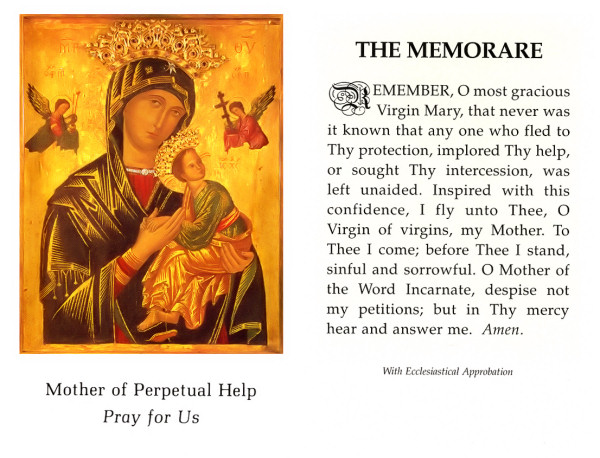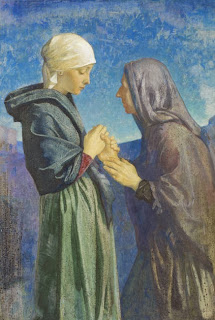'Consider this often: you are God’s . . . and God is yours.' Sunday Reflections, Trinity Sunday, Year A
The Trinity with the Dead Christ
Lodovico Carracci [Web Gallery of Art]
Readings (New American Bible: Philippines, USA)
Readings (Jerusalem Bible: Australia, England & Wales, India [optional], Ireland, New Zealand, Pakistan, Scotland, South Africa)
Gospel John 3:16-18 (New Revised Standard Version, Anglicised Catholic Edition)
Jesus said to Nicodemus:
‘For God so loved the world that he gave his only Son, so that everyone who believes in him may not perish but may have eternal life.
‘Indeed, God did not send the Son into the world to condemn the world, but in order that the world might be saved through him. Those who believe in him are not condemned; but those who do not believe are condemned already, because they have not believed in the name of the only Son of God.'
The Two Trinities
Murillo [Web Gallery af Art]
A few years ago we in Worldwide Marriage Encounter in Bacolod City, Philippines, held a family day. One of the last activities was for the pre-teens where the children were asked to share with everyone what they most loved about their parents. One boy of about ten said, 'What I love most about my parents is that they are always together'.
In my closing remarks I picked up on this and reminded the couples that this youngster had expressed the heart of marriage: that the primary vocation of a married couple is to be husband and wife, not father and mother. The latter is a consequence of the first. When children know that for their parents nobody is more important than each other they will be drawn into that relationship.
Marriage is a reflection of the Trinity, which we celebrate today. The perfect love that the Father and Son have for one another has generated the Holy Spirit from all eternity and will continue to do so for all eternity. The love of husband and wife have for each other constantly generates love, the source of which is the Most Holy Trinity, and in most cases that love results in new life.
In his Wednesday audience on 2 April 2014 Pope Francis said: Marriage is the icon of God’s love for us. Indeed, God is communion too: the three Persons of the Father, the Son and the Holy Spirit live eternally in perfect unity. And this is precisely the mystery of Matrimony: God makes of the two spouses one single life. The Bible uses a powerful expression and says 'one flesh', so intimate is the union between man and woman in marriage. And this is precisely the mystery of marriage: the love of God which is reflected in the couple that decides to live together. Therefore a man leaves his home, the home of his parents, and goes to live with his wife and unites himself so strongly to her that the two become — the Bible says — one flesh.
Murillo's painting, The Two Trinities, captures something of this. The unity between Mary and Joseph as wife and husband reflects the love of the Father and Son for each other. And while Joseph is not the Father of Jesus he is his legal father, according to Jewish law, as he named him: Her husband Joseph, being a righteous man and unwilling to expose her to public disgrace, planned to dismiss her quietly. But just when he had resolved to do this, an angel of the Lord appeared to him in a dream and said, “Joseph, son of David, do not be afraid to take Mary as your wife, for the child conceived in her is from the Holy Spirit. She will bear a son, and you are to name him Jesus, for he will save his people from their sins” (Matthew 1:19-21). The love that Joseph and Mary had for each other as husband and wife generated the love that Jesus experienced in his humanity while growing up in Nazareth, just like the youngster at our family day in Bacolod.
More than that, St Joseph was a real father to Jesus, his 'Dad', 'Papa', 'Tatay', as Spouse of Mary, the primary title the Church gives to this great saint on his major feast day, 19 March, and now in all the Eucharistic Prayers.
Moses
Carlo Dolci [Web Gallery of Art]
And we find a wonderful example of a father-figure in Moses in the First Reading when he pleads with God: “If now I have found favor in your sight, O Lord, I pray, let the Lord go with us. Although this is a stiff-necked people, pardon our iniquity and our sin, and take us for your inheritance” (Exodus 34:9).
We know that more than once Moses castigated his people and he acknowledges that they can be hard to deal with: This is a stiff-necked people. But in the same breath he acknowledges himself as one of them: Pardon our iniquity and our sin, and take us for your inheritance. He is a real father, pleading on behalf of his family for God's mercy while fully aware of their and his own shortcomings.
Carracci's The Trinity with the Dead Christ shows us the Trinity in the context of the death of Jesus, the Second Person of the Trinity, who became Man and died for us on the Cross. This is a common theme in many paintings, the Suffering Trinity (see El Greco's The Trinity below). Not only Jesus suffered. So did his Father and the Holy Spirit.
The Return of the Prodigal Son (detail)
Rembrandt [Web Gallery of Art]
I know of no greater expression of the suffering of the Father than the face of the father in Rembrandt's Return of the Prodigal Son. This doesn't express the joy that we know was there but the suffering behind it. And in that parable Jesus was showing us the compassion, the 'suffering with', of the Father for each of us.
Carracci shows us the Father and the Holy Spirit to be as much involved in Calvary as Jesus, the Second Person of the Trinity, God who became Man, was. They suffered along with him, out of compassion for us.
This reality too is reflected in marriage as a couple gradually prepare their children to become independent while preparing themselves for the pain of letting their children go. To a lesser extent it is reflected in the lives of all who are responsible in some way for the education, formation and mentoring of others. A teacher may feel some sadness as the year ends and students move on but a few months later a new batch will be there. However, parents never cease to be parents and will always continue to share both the joys and sorrows of their adult children, who often enough are the cause of their parents' inner suffering.
Likewise, the Persons of the Blessed Trinity never cease to be a loving God, a God who calls each of us to share in the intense and eternal Love that they are for all eternity. Every human relationship is meant to reflect that to some extent, most of all the relationship between husband and wife.
—God is my Father! If you meditate on it, you will never let go of this consoling consideration.
—Jesus is my intimate Friend (another re-discovery) who loves me with all the divine madness of his Heart.
—The Holy Spirit is my Consoler, who guides my every step along the road.
Consider this often: you are God’s . . . and God is yours. (The Forge,No 2, St Josémaría Escrivá).
Antiphona ad introitum Entrance Antiphon (Cf Tobias 12:6)
Benedictus sit Deus Pater, Unigenitusqie Dei Filius,
Blest be God the Father, and the Only Begotten Son of God,
Sanctus quoque Spiritus,
and also the Holy Spirit,
quia fecit nobiscum misericordiam suam.
for he has shown us his merciful love.
In the Extraordinary Form of the Mass (Traditional Latin Mass) this is used as the Offertory Antiphon on Trinity Sunday.
The Trinity
El Greco [Web Gallery of Art]
Magnificat, the monthly liturgical publication, has an excellent commentary on El Greco's painting The Trinity, in the current issue by Fr John Gribowich. I can highly recommend Magnificat as an aid to prayer, both liturgical and private.
The Irish Blessing 2020
The Covid-19 pandemic has lead to much creativity. The Irish Blessing 2020 is one of countless examples. 300 Christian communities in Ireland worked together on this video, which was launched on Pentecost Sunday, as this report shows. Similar videos have been created by Christians working together in many parts of the world.
More than ten percent of the people on the island of Ireland are immigrants, the vast majority of them arriving within the last 25 years. Most of their children are Irish-born, something reflected in the video. The words go back to the earliest days of the Christian faith in Ireland and are expressed here in a blend of traditional Irish and contemporary international musical idioms performed with Christian joy. There is no longer Jew or Greek, there is no longer slave or free, there is no longer male and female; for all of you are one in Christ Jesus (Galatians 3:18).








Comments
Post a Comment